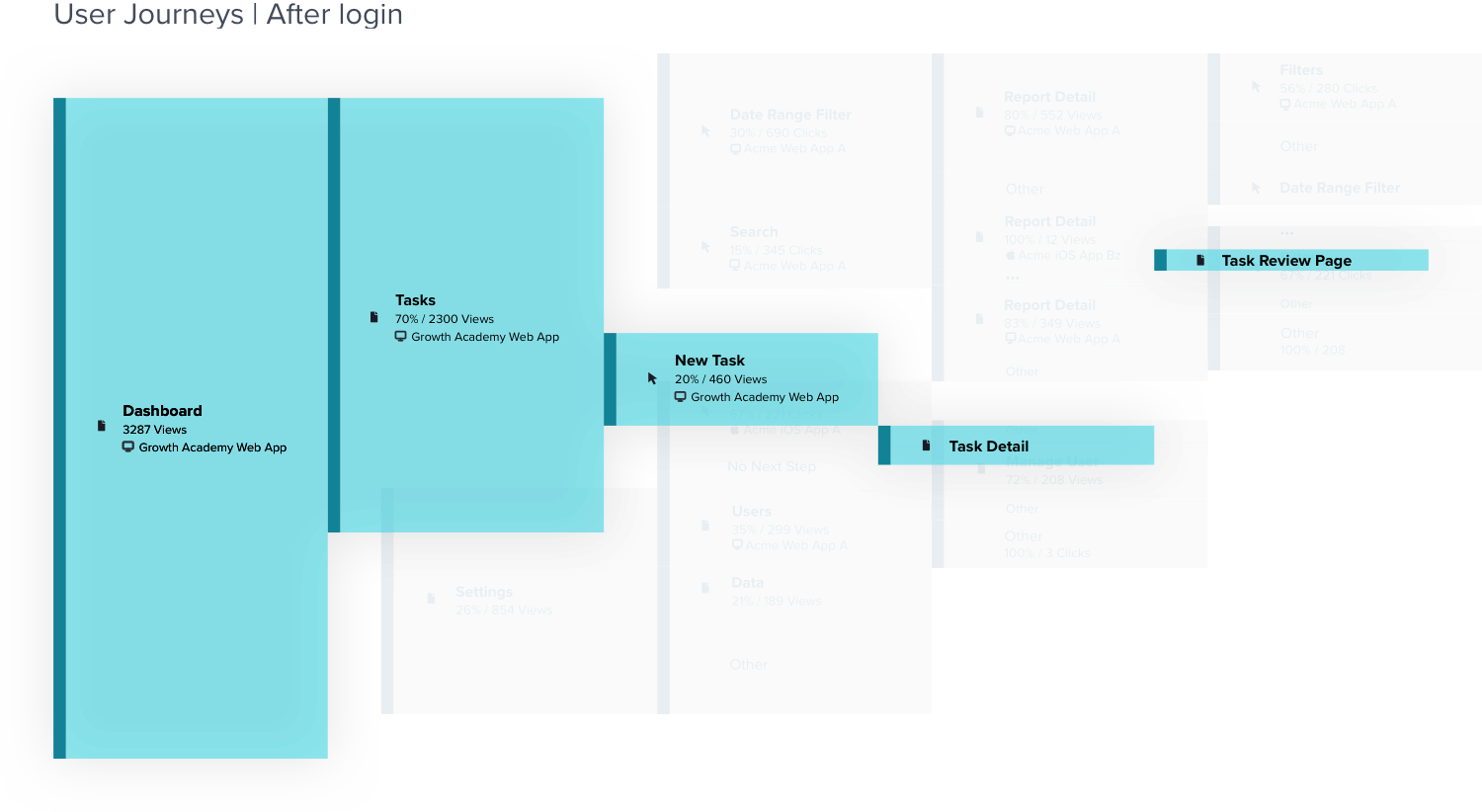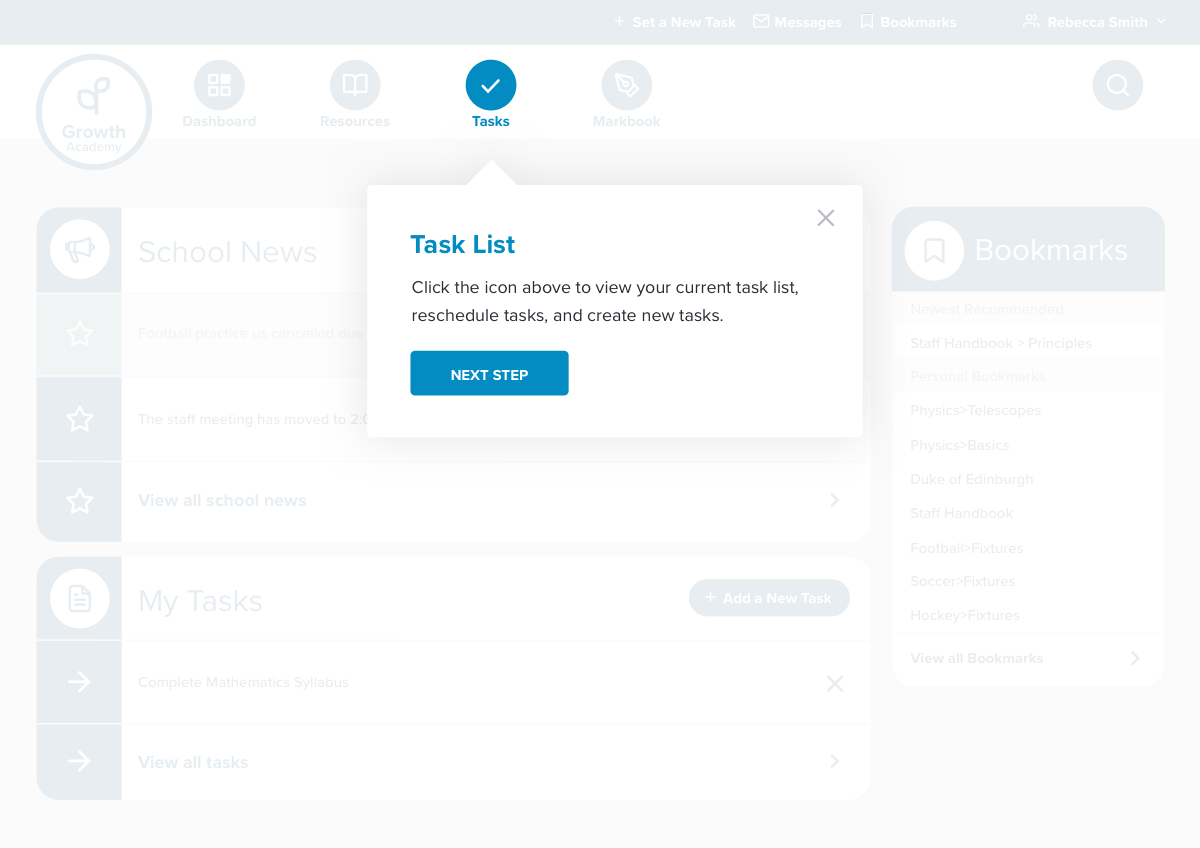Five ways education technology orgs are using Pendo to deliver the best product experience
Education technology platforms have become integral to just about every institution—private, public, and higher alike—that has been forced to shift all of their operations into the virtual realm during COVID-19.
Pendo can help bridge that digital gap by understanding how platforms are being used. That makes it possible to bring students, teachers, and administrators—even those new to online education or school administration technology—up to speed as quickly as possible. That way, education isn’t interrupted during these turbulent times.
And once those users have begun experiencing your platform, Pendo can help focus your product’s roadmap by asking them what they think of it and how you can improve, right in the app.
Here are some ways education technology companies are using Pendo to evolve and adapt their products to meet the needs of educators, administrators, and families.
Drive engagement and retention by understanding and responding to user behavior
Teachers should be spending most of their time developing lesson plans and delivering high-quality education to their students, not learning new software platforms, while parents and administrators should be making sure they stay on track. That means your edtech platform needs to be designed intuitively to remove obstacles to adoption. Pendo’s paths and funnels, let you gain deep insight into how your platform is being used by different types of users and personas. Then use in-app guides to lead them down the optimal paths to success.
Having that sort of insight can reveal patterns in how students are learning or how instruction is being delivered, then schools and educational institutions can adapt or shift their strategy to maximize learning outcomes. It can also reveal which parts of your platform are most critical to those outcomes so you can ensure that education is never interrupted, like online learning platform Firefly Learning did.
Firefly used Pendo to help prioritize resource allocation when the COVID-19 pandemic forced schools and universities to close physical campuses and move all education to an online format. Pendo’s analytics revealed which parts of the platform were used the most, so development and support resources could be allocated to those areas, ensuring reliability as usage surged. Pendo analytics also revealed the most efficient workflows for teachers and students, and Pendo guides were deployed to nudge each user type onto those paths, reducing stress on the platform’s back-end systems.
Magnus Health used Pendo analytics and heat mapping capabilities to gain a deeper understanding of how school admin users were working in their web and mobile apps, then designed new onboarding flows around those insights using Pendo guides. Once the guides were deployed, onboarding time dropped by 40%. Pendo data also allowed the company to uncover early indicators of churn, so they could proactively intervene and boost retention.

Improve product adoption while reducing support tickets
The start of a new semester or school year means your platform is about to see a lot of new users, as well as those returning after weeks or months away from the product.
Pendo can help streamline onboarding for new users and draw attention to new or relevant features for returning ones. This is critical at the beginning of a school year, when teachers, students and families are at their busiest and may not take time to read documentation. They expect an intuitive experience like any other app they’ve grown to love.
Say a teacher is having trouble setting up an online video lecture, or a student can’t find a feature that they need to use to upload an assignment. Frustration sets in, and they either flood your support lines or just give up altogether and leave the platform. Any friction in the learning experience can impact student outcomes, so it’s critical to get the user experience right. A well-placed series of Pendo tooltips and guides can lead users past friction points, driving up adoption across the platform.
Nelnet used Pendo guides to direct users to a feature that they knew would be useful for families trying to obtain student financial records during tax season—usage of the feature spiked 200% afterward, and support call volume plummeted. The company also used guides to draw attention to useful e-learning features once COVID-19 made online education a necessity.
Pendo guides are also a powerful tool for promoting courses, webinars, virtual parent-teacher conferences, and other educational content. One Pendo customer added a badge guide on their site to promote one of their online courses. In one month they increased page views by 104% and increased signups by 97%. They also saw an 80% increase in course completion.

Support complex software implementations
Higher education institutions and school systems are often very large organizations, with thousands of faculty, staff and students. This makes any software implementation a daunting task. It doesn’t help that social distancing amid COVID-19 means any training needs to be conducted virtually these days, either.
Pendo’s in-app guidance capabilities make it easy to automate onboarding with tooltips and walkthroughs, so that users can teach themselves to use the platform. That means districts and educational institutions no longer have to cram all the training for your platform into a limited number of professional development days. Using in-app guides and walkthroughs, you can automate training around the most basic tasks, both making it easier for faculty and staff to adopt your product to its fullest and freeing up those professional development sessions for more complex continuing education topics.
Pendo was a critical tool for Firefly Learning in the early days of the COVID-19 outbreak. The company found itself onboarding six months worth of new or returning users in just two weeks. Using in-app guides and tooltips for onboarding allowed the company to quickly get those users up to speed in an automated way, at a scale that would have been nearly impossible to handle with human-to-human training.
Pendo analytics can help you keep track of users’ progress through onboarding flows, so you can be sure they’re getting the most out of your platform as quickly as possible and intervene with additional support if you find that they’re dropping off the path.

Improve your product by collecting user feedback
Pendo lets you gauge user sentiment and collect feedback right in the app, bypassing their cluttered email inboxes. Connecting with users while they’re using your platform makes it drastically more likely that you’ll receive useful, organic intelligence that can help you refine and improve your product.
Kajabi develops a platform for businesses offering online education and courses. The company uses Pendo’s NPS capabilities to capture sentiment from segments of users and Pendo Feedback to collect specific feedback and feature requests. Customer input helps the product team shape parts of the platform to better meet users’ needs, and collecting it in-app yields a much higher response rate than the traditional email-based approach. Using Pendo Feedback, the company also launched a feedback portal where users can submit ideas and requests, then vote on each other’s submissions to help surface the highest value, most sought-after features.
Magnus Health used Pendo Feedback to completely redesign their process for collecting feedback, doing away with a process that required hours poring over spreadsheets to prioritize requests. With a Pendo-powered system, users simply rank wants by voting them up. A series of feature requests that came in signaled that customers wanted functionality that competitors had, leading the team to build more competitive offerings.


Data from Pendo can help you identify and prioritize work and improvements for the highest value parts of your platform or home in on what to build next. It also helps you understand which parts of the product are good candidates to sunset
Coursera used Pendo to identify the most-visited pages of the platform, then prioritize user experience improvements on those pages in time for its annual user conference. Pendo in-app surveys were used to measure customer satisfaction associated with the improvements.
Often, Pendo data shows that certain parts of the platform aren’t being used at all and can be retired to reduce technical debt. Pendo’s Data Explorer offers a centralized location for exploring your data through visualizations and reports.
Get deep insights in full regulatory compliance
Student privacy is a top concern in the education industry, with regulations like the Federal Education Rights and Privacy Act governing what sort of information needs to be kept secure.
It’s top of mind at Pendo, too. With Pendo’s SOC 2 Type 2 compliance covering all five Trust Services Principles, you can rest assured that your users’ personally identifiable information will remain secure. All data hosted by Pendo is encrypted, and the only identifying information that it requires is a unique user ID for your end users. You can choose to send other information about your users to support segmentation and guide targeting, and Pendo has procedures in place to safeguard that information, to safeguard patient information, including signing a BAA, at the customer’s request.

